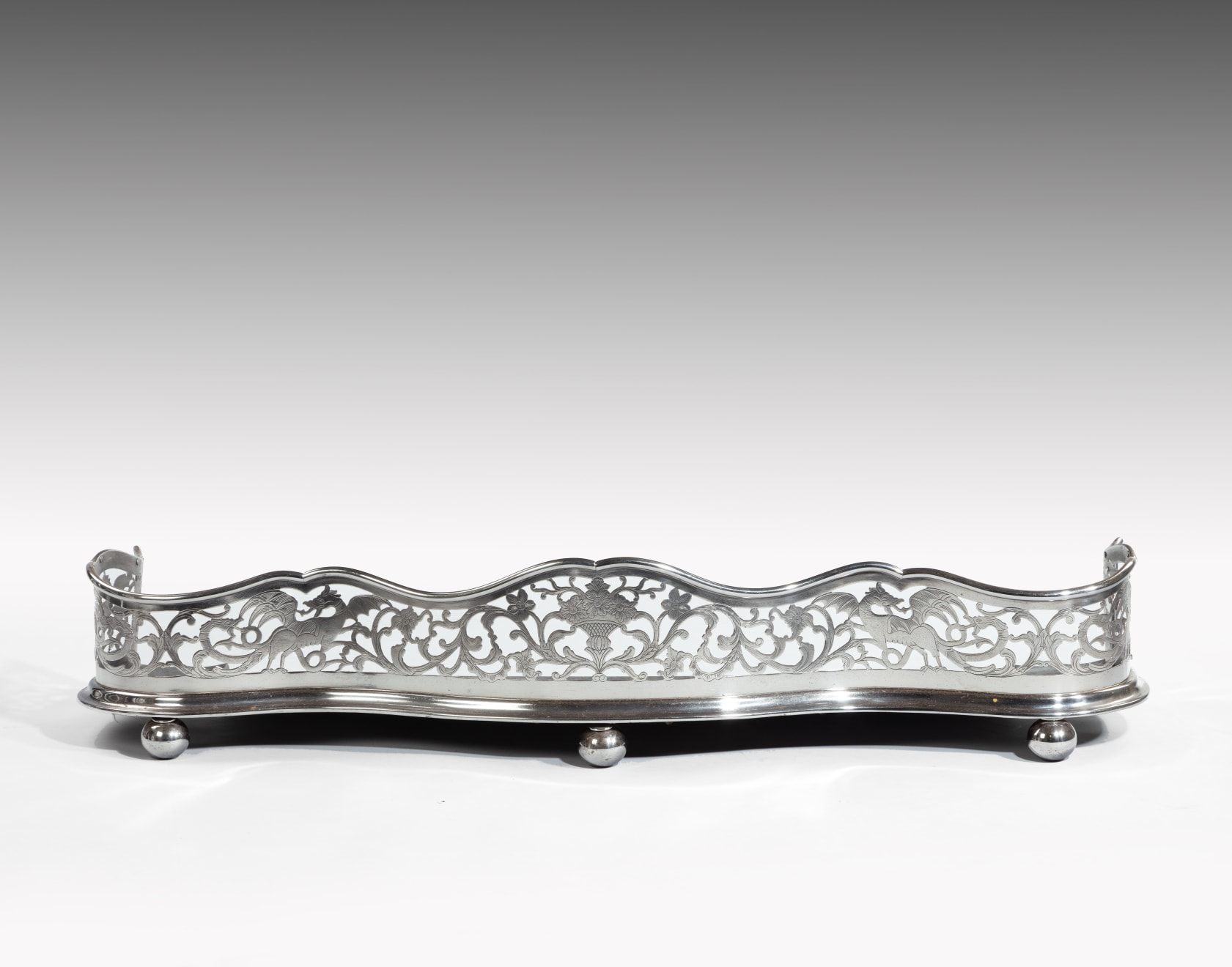George II Steel Serpentine Fender
ENGLAND, CIRCA 1750
20 x 101.6 x 30.8 cm
8 x 40 x 12 ¼ in
8 x 40 x 12 ¼ in
6855
Further images
Of serpentine shape, in bright cut steel, the base and top rim are cast, the frieze engraved with dragons and foliage, with scrolling serpents, with the original ball feet. Christopher...
Of serpentine shape, in bright cut steel, the base and top rim are cast, the frieze engraved with dragons and foliage, with scrolling serpents, with the original ball feet.
Christopher Gilbert and Anthony Wells-Cole comment that ‘By the middle of the 18th century polished or ‘bright’ steel grates and fenders had become fashionable. These are often finely pierced and engraved to match the fretwork aprons of grates and designs appeared in metal work and furniture pattern books.’ (The Fashionable Fireplace 1660-1840, Leeds Art Galleries, 1985 p. 29). Gentle and Feild picture an early 18th century brass example of similar form in ‘Domestic Metalwork 1640-1820’, Antique Collectors’ Club 1994, Plate 20, p. 49.
The National Trust Collections holds a similar steel version with a matching fire grate at Dyrham, Gloucestershire and states ‘This fire basket and fender are similar to those made for Corsham (Court) by Alexander and Shrimpton, 1760-72.’
Another similar example is referred to by Peter, Nancy and Herbert Schiffer: ‘Even though slightly curved, heavy cast and of unusually fine quality, this fender is most interesting because of the engraved dragons. Some experts feel this type of fender was made at the end of the seventeenth century due to a maker’s mark found on one at the Victoria and Albert museum. It seems quite reasonable, however, that it dates from an early eighteenth century time.’ (‘The Brass Book’, Schiffer, 1978, plate B, p. 241).
Christopher Gilbert and Anthony Wells-Cole comment that ‘By the middle of the 18th century polished or ‘bright’ steel grates and fenders had become fashionable. These are often finely pierced and engraved to match the fretwork aprons of grates and designs appeared in metal work and furniture pattern books.’ (The Fashionable Fireplace 1660-1840, Leeds Art Galleries, 1985 p. 29). Gentle and Feild picture an early 18th century brass example of similar form in ‘Domestic Metalwork 1640-1820’, Antique Collectors’ Club 1994, Plate 20, p. 49.
The National Trust Collections holds a similar steel version with a matching fire grate at Dyrham, Gloucestershire and states ‘This fire basket and fender are similar to those made for Corsham (Court) by Alexander and Shrimpton, 1760-72.’
Another similar example is referred to by Peter, Nancy and Herbert Schiffer: ‘Even though slightly curved, heavy cast and of unusually fine quality, this fender is most interesting because of the engraved dragons. Some experts feel this type of fender was made at the end of the seventeenth century due to a maker’s mark found on one at the Victoria and Albert museum. It seems quite reasonable, however, that it dates from an early eighteenth century time.’ (‘The Brass Book’, Schiffer, 1978, plate B, p. 241).








